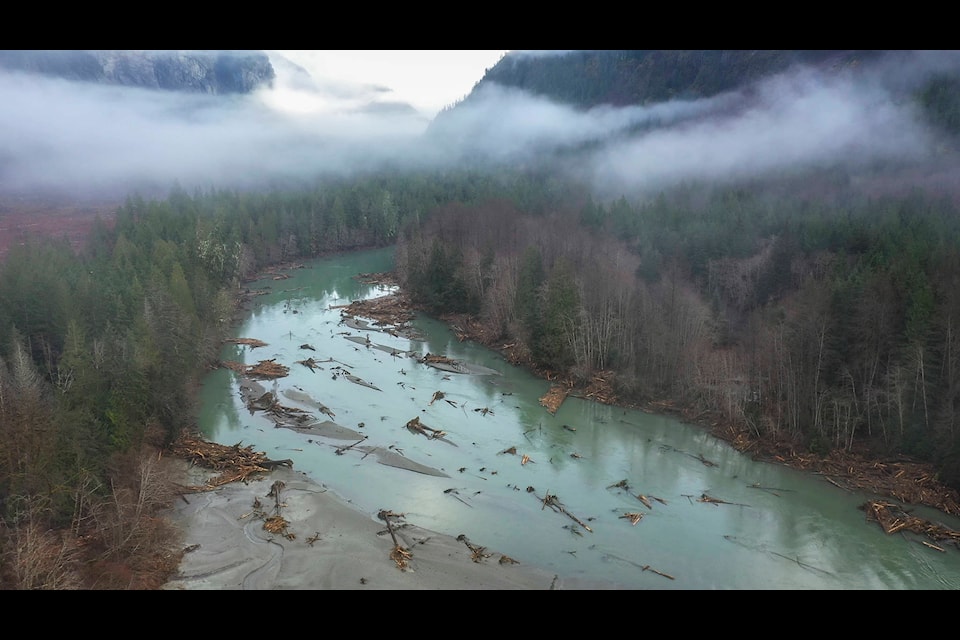A research team is probing a devastating landslide on the B.C. central coast in the hopes of predicting if and when another slide may be coming.
The Hakai Institute, which operates an ecological observatory on Quadra Island, near Campbell River, conducts long-term research in the coastal regions of the province, including seismic research and ocean-based ecological research. Part of its research area is Bute Inlet — site of the Nov. 28 slide that launched a 100-metre wave that washed out the Southgate River.
The institute had been monitoring the area prior to the slide, and afterwards sent out researchers for preliminary data on what the incident will mean for salmon habitat in the inlet.
Hakai founder Eric Peterson said that a team did a flyby on Dec. 22, which includes a lidar (light detection and ranging) scan, which is similar to radar, but with laser light instead of sound waves.
“The instrument is a specialized laser scanner,” Peterson said. “We make multiple passes and thereby build up a very precise 3D model of the landscape. Fortunately, we have recent lidar/3D models from before the landslide from our ongoing research.”
The lidar scan will shed some light on the stability of the mountain and the risk of other slides, as well as information on how it happened and whether or not it is likely to happen again.
“We hope to be able to conduct a detailed comparison of the ‘before’ and ‘after’ 3D lidar models, and thereby be able to work out exactly what material moved from where to where,” he said. “The current model may help us predict whether the mountain is stable now, or whether another collapse might be coming.”
Peterson explained that the slide highlights the issue of glacial retreat along the coast. Whether or not the glacier’s retreat was a direct cause of the Bute Inlet slide is to be determined, but retreating glaciers often cause instability and make the landscape more sensitive to landslides.
According to a video posted on the Hakai Institute website, the landslide occurred at around 6 a.m. on Nov. 28. The initial event had an equivalent shock as a 4.9 earthquake, and sent roughly 10 million cubic metres of material into Elliot Lake, just north of the end of the inlet.
That material caused a glacial lake outburst, which sent a 100-metre wave down the narrow creek, uprooting trees and carving a deep channel through the valley. Once the water hit the ocean, it caused a current of high-turbidity water to extend out 70 km.
Story continues below…
Researchers measured the temperature of the water over a few weeks following the slide, and recorded a 0.5 degrees Celsius dip in deep water temperature. A temperature change can effect the amount of dissolved oxygen and the pH of the water. Increased sediment in the ocean is also likely to impact which bacteria and phytoplankton can grow, which has a direct effect on the salmon in the area.
Since staff have been off for the holidays, analyzing the data has taken some time. The video posted on Dec. 22 is an introduction to the upcoming data and preliminary research, and more information will be made available as it comes.
Hakai researchers are working closely with the Homalco First Nation, since the incident took place on their resource management area.
“We expect to be working together in the coming years on research, remediation, recovery, stewardship of salmon, forestry, and all the elements of this complex & dynamic ecosystem,” Peterson said.
For more news from Vancouver Island and beyond delivered daily into your inbox, please
marc.kitteringham@campbellrivermirror.com
Like us on and follow us on



